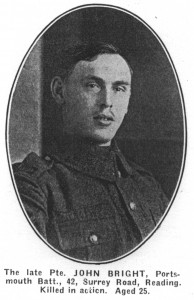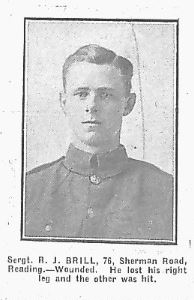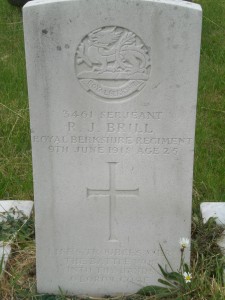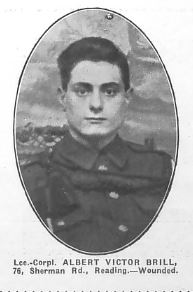Harry George Brewer
Lance Sergeant C/6276
18th Battalion King’s Royal Rifle Corps
Division 24
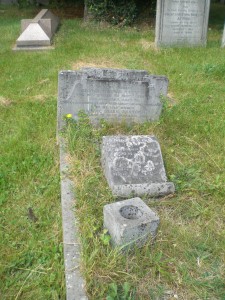  |
Harry George Brewer was the son of Frank and Emma Brewer, of 653, Oxford Road, Reading. A grave to the family of Barton and Andrews also bears the initials “E.B. and F.B. and Cpl. H.G.B. son killed in action September 16th 1916, aged 27” is commemorated on a small scroll. Burial records revealed the name Brewer. The 1911 census records indicate the Harry Brewer was a journeyman carpenter. His father was a plumber and other sons also had trades.
CWGC information revealed that Harry George Brewer was killed on the 15th September 1916. He is listed on the Thiepval Memorial to the Missing. Pier and Face 13A and 13B.
The 15th September was the beginning of the 3rd phase of the Somme offensive. On this day an advance along six miles of front to a depth of 2000 -3000 yards took place. The attack was special because it was the first time that the heavy armoured cars or tanks were used. Although several tanks ditched along the way those that fought near Flers were very successful and assisted in the taking of the village. During the next four days, all along the front, the fighting was bloody and many men lost their lives. Exactly where the 18th Battalion KRRC were positioned is not yet known. It is not clear upon which day Harry Brewer died but he had no known grave. The allied attack was hindered on the 19th September by bad weather but, resumed the day after and continued well into November. During this time many thousands lost their lives.
